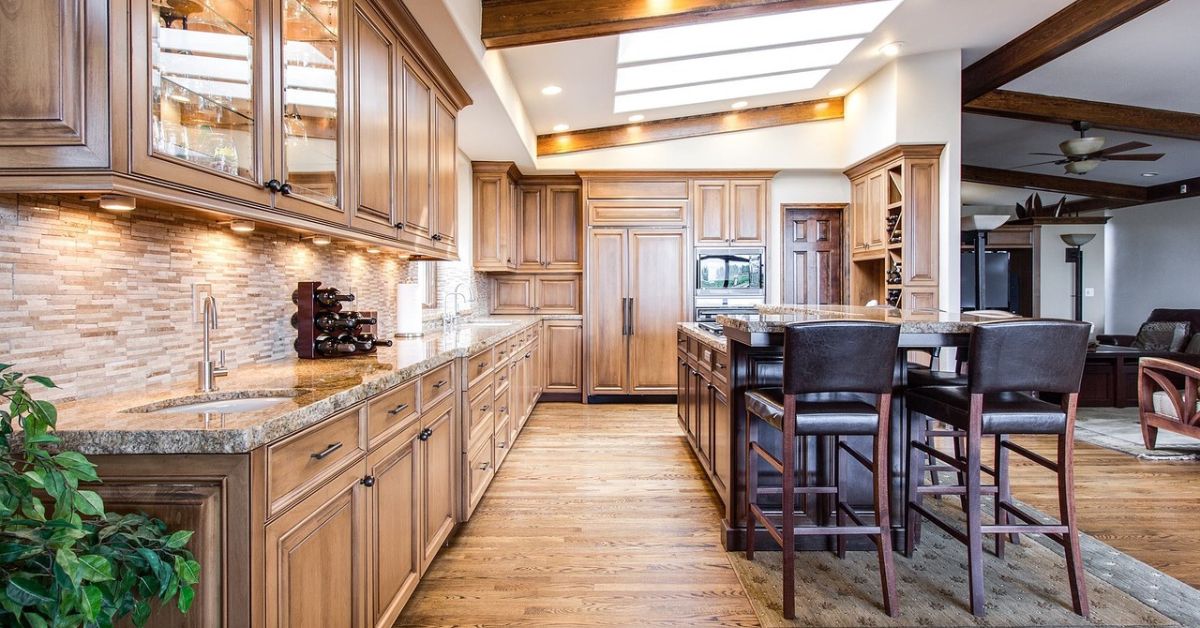Soft White vs. Daylight Bulbs: Where to Use Both in Your Home
Category
Categories

Soft White vs. Daylight Bulbs: Where to Use Both in Your Home
Choosing Between Soft White and Daylight Bulbs for Your Home.
An expert in design and lighting simplifies the decision.
When designing a home, paying attention to every detail is essential, including the choice between soft white and daylight bulbs. Understanding how each type of bulb appears is crucial before making a decision. Soft white bulbs emit a warm, yellow glow, while daylight bulbs are often LED lights designed to mimic natural sunlight without harmful UV rays. The difference lies in their color temperature, which we will explore further shortly.
Choosing the Right Bulb for Your Home: Experts Weigh In
So, is one type of bulb better than the other? If so, why? In order to shed some light on the subject, we spoke with interior designer Ryan Austin Hagood, principal at Atlanta-based r.a.d. Interiors and Josh Weiss, executive vice president of Visual Comfort & Co., to explore the nuances of different light bulbs.
Expert Insights on Bulb Selection
How do you decide between warm white and soft white bulbs? Hagood and Weiss provide their expert opinions on when, where, and how to use each type of bulb to create the perfect ambiance in your home.
Setting the Mood with Lightbulbs
Discover the art of setting a mood in your living space simply by choosing the right lightbulbs. Learn how to transform your home with the flick of a switch.
The Contrast Between Daylight and Soft White Bulbs
Daylight and soft white bulbs differ primarily in color temperature, measured in Kelvins. As per Westinghouse Lighting, lower Kelvins result in a more yellow hue, with the range spanning from about 1,000K to 10,000K, akin to stadium lighting or nighttime construction setups. Personal preferences play a role in selecting the ideal color temperature, influenced by upbringing, regional norms, and individual choices.
The temperature spectrum allows for a middle ground between stark white brightness and warm yellow tones, enabling individuals to opt for a balanced hue that is easy on the eyes and creates a comfortable ambiance in their living spaces.
Pros and Cons of Daylight and Soft White Bulbs
While certain individuals, including lighting specialists, interior designers, and even editors at The Home Designer, may have a preference for one bulb type over the other, each has its advantages and disadvantages. Both options offer benefits and drawbacks that should be taken into account when deciding between the bright, cool-toned illumination of daylight bulbs or the soft, romantic glow of soft white bulbs. Below, we outline the merits and drawbacks of each type to assist you in making an informed choice.
Daylight Bulbs
Amazon Basics 5000 K A19 LED Light Bulbs
In today’s world, finding the right light bulbs for your home can be a challenging task. With so many options available, it’s essential to choose bulbs that not only provide adequate lighting but also offer energy efficiency and longevity. The Amazon Basics 5000 K A19 LED light bulbs are a great choice for consumers looking for a reliable and cost-effective lighting solution.
Energy-Efficient Lighting
One of the key features of the Amazon Basics 5000 K A19 LED light bulbs is their energy efficiency. These bulbs use LED technology, which is known for consuming less energy than traditional incandescent bulbs. By choosing these LED bulbs, homeowners can reduce their electricity bills while still enjoying bright and efficient lighting throughout their homes.
Long-Lasting Performance
Another benefit of the Amazon Basics 5000 K A19 LED light bulbs is their longevity. LED bulbs are known for their durability and can last significantly longer than incandescent or fluorescent bulbs. This means that homeowners won’t have to worry about constantly replacing their light bulbs, saving them time and money in the long run.
Cost-Effective Solution
With their energy-efficient design and long-lasting performance, the Amazon Basics 5000 K A19 LED light bulbs offer a cost-effective lighting solution for any home. While the initial cost of these bulbs may be slightly higher than traditional options, their longevity and energy savings make them a smart investment for homeowners looking to reduce their environmental impact and save money on their utility bills.
Conclusion
When it comes to choosing the right light bulbs for your home, the Amazon Basics 5000 K A19 LED bulbs are an excellent choice. With their energy-efficient design, long-lasting performance, and cost-effective benefits, these bulbs offer a reliable and environmentally friendly lighting solution for any household.
Soft White Bulbs
DEGNJU 2700K LED Soft White Bulbs
The DEGNJU 2700K LED Soft White Bulbs offer a warm and inviting glow to any room. These bulbs provide a soft white light that is perfect for creating a cozy atmosphere in your home. With their 2700K color temperature, these LED bulbs emit a warm, inviting light that is ideal for living spaces and bedrooms. Illuminate your home with the soft and warm glow of DEGNJU 2700K LED Soft White Bulbs.
DEGNJU 1500K Light Bulbs
The DEGNJU 1500K Light Bulbs are designed to provide warm and ambient lighting for any space. With their unique color temperature of 1500K, these bulbs create a cozy atmosphere perfect for relaxation or entertaining. Whether used in a living room, bedroom, or dining area, these light bulbs are sure to enhance the overall feel of the room.
E Energetic Lighting 1700K Energetic Dimmable A19 LED Edison Bulbs
Some individuals prefer brighter daylight bulbs due to their crisp, pure white color, aiding in better visibility during tasks, according to Hagood. However, this choice can create a sterile, fluorescent atmosphere. On the other hand, the softer, warmer white light is ideal for relaxation and social gatherings, offering easy dimming options or wattage adjustment for increased brightness. While Hagood leans towards warm white light, others may appreciate the bright, focus-enhancing quality of daylight bulbs – the choice ultimately depends on personal preferences.
Which Type of Bulb is Superior, Soft White or Daylight?
We must clarify that it is not a straightforward comparison as one type is not definitively superior to the other. Consider it akin to choosing between down-filled and memory foam pillows: the ideal choice depends on individual comfort preferences. Similarly, when it comes to lighting temperatures, some may prefer the energizing brightness of daylight bulbs, while others may opt for the gentler ambiance provided by soft white bulbs.
Related Stories
Consider where and how you will use your lighting to determine which option suits your needs best. For areas like the bedroom, den, living room, or dining room where a warm and soft glow is preferred, opt for soft white bulbs. Conversely, for spaces like the kitchen, library, or home office that require brighter illumination, daylight bulbs offer a whiter light. The importance of creating a cozy ambiance at night is highlighted by Weiss, emphasizing the significance of selecting the right bulbs for a comfortable nighttime experience.
The Home Designer’s Lighting Tips
When it comes to lighting your home, there’s a middle ground you can explore. The Home Designer recommends opting for a soft white 2,700K color temperature. This choice adds a warm and cozy ambiance to interior designs, essential for any type of light fixture installation, from hanging pendants to table lamps.
Where to Utilize Soft White and Daylight Bulbs?
While there are no strict rules for using specific types of bulbs in particular rooms, Hagood provides some lighting recommendations. “Soft, warm bulbs are ideal for main living areas and all types of fixtures, adjusting the wattage or number of bulbs in areas requiring task lighting.” After all, bright, stimulating lights may not be necessary or desired in spaces meant for relaxation, such as the bedroom.
“Daylight bulbs are most suitable for utility spaces like garages or basements,” he suggests. They can also be used in the kitchen to provide additional bright light. While not essential for ceiling fixtures, they can be beneficial for task lighting where food preparation takes place. Weiss notes, “I generally do not recommend daylight bulbs for residential use, except perhaps in a garage or exercise room, where I would prefer 3,500K or 4,000K.”



